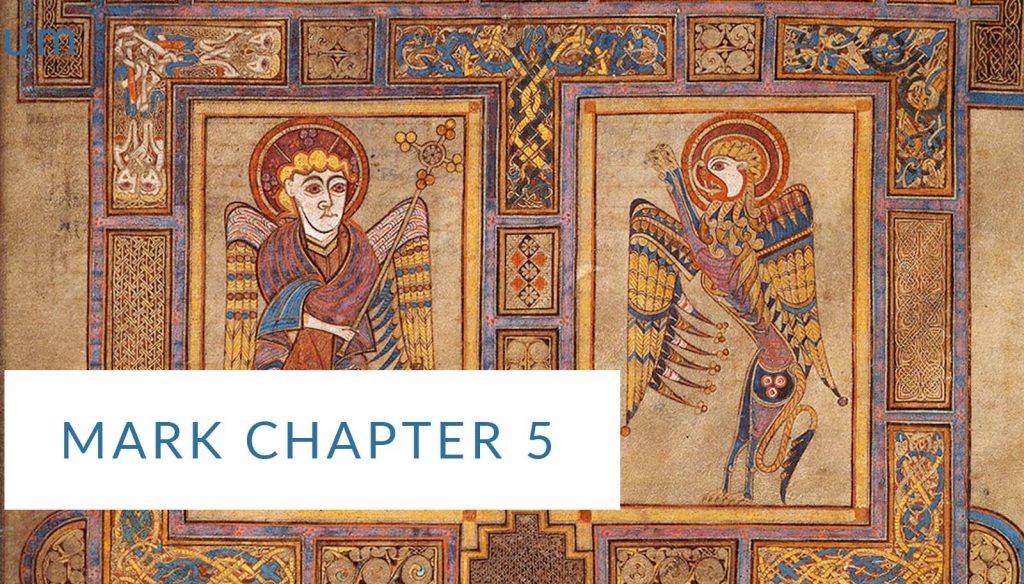This week's readings are from Mark chapter 5. A complete list of this week's readings can be found here.
Today's Reading
While he was still speaking, people came from the synagogue leader’s house saying, “Your daughter has died. Why trouble the teacher any longer?” But Jesus, paying no attention to what was said, told the synagogue leader, “Do not be afraid; just believe.” He did not let anyone follow him except Peter, James, and John, the brother of James. They came to the house of the synagogue leader where he saw noisy confusion and people weeping and wailing loudly. When he entered he said to them, “Why are you distressed and weeping? The child is not dead but asleep!” And they began making fun of him. But he forced them all outside, and he took the child’s father and mother and his own companions and went into the room where the child was. Then, gently taking the child by the hand, he said to her, “Talitha koum,” which means, “Little girl, I say to you, get up.” The girl got up at once and began to walk around (she was twelve years old). They were completely astonished at this. He strictly ordered that no one should know about this, and told them to give her something to eat. (Mark 5.35–43 NET)
Resources for the Reading
- Podcast(s) for this Reading
- Parallel passages in the other Gospels.
My commentary stated that it was very much the norm for mourners to cry out loudly…and that it was a disgrace to the family of the deceased if it did not happen…and yes, people made mourning a “job” and would be paid to mourn after the individual past away 😳🤪👍🐮
It is so interesting to me that Jesus healed the demon possessed man and told him to share the news with his friends and family and he healed the woman with bleeding publicly. However, the young girl who he healed, he told not to tell anyone about her healing. Both the demon possessed man and the woman with bleeding would have been considered outcasts while the prestigious/leader’s daughter would have been an insider. Jesus turns everything upside down and I love the way Mark strategically and beautifully shares the story. All three situations are so different but yet Mark does such a good job weaving them all together.
